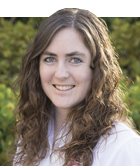
“In a perfect world, it makes sense that raising your replacements would be the most profitable long term for your farm,” detailed Virginia Cooperative Extension agent, Jeremy Daubert. “Managing heifer inventory on today’s dairy farms requires a comprehensive look at the entire operation to maximize production and profitability.”
In 2018 in Virginia, Daubert explained that bull calf prices were near $100 while spring heifers netted $1,200 each and raising a heifer cost around $1,600. Today, bull calves are bringing $850, heifers are worth $3,000 to $4,000 and raising a heifer costs around $2,600.
“It is important to recognize that in the time it takes to raise a heifer (two years) these economic trends will likely be different,” Daubert said. “They may be better or worse, but they are sure to change.”
For that reason, he shared these considerations to determine what is best on your farm.
- Do you have enough facility space?
- Do you have enough feed?
- Do you have enough labor?
“If the answer to any of these is no, then you may be best served by simply breeding all your animals to beef bulls, selling the calves, and buying replacements,” he shared.
About three years ago, my dad and I made the decision to breed more sexed semen and pair it with some use of beef bulls on our less-desirable genetics. We were hoping to capitalize on what we saw to be a reduction in the U.S. heifer herd and a need for more good heifer genetics.
We have benefitted from the way the market has changed, but we also have been fortunate to have Daubert’s three recommendations – enough facility space, feed, and labor.
While that has been true, we continue to ask the question, when is the right time to rightsize our youngstock herd. If you are looking to make adequate replacements for your herd, consider the table below provided by Duabert.
Cull Rate (%) | Age at First Calving 22 months | Age at First Calving 24 months | Age at First Calving 26 months | Age at First Calving 28 months | Age at First Calving 30 months |
26 | 53 | 58 | 63 | 67 | 72 |
30 | 61 | 66 | 72 | 78 | 83 |
34 | 69 | 76 | 82 | 88 | 94 |
38 | 77 | 84 | 92 | 99 | 106 |
42 | 86 | 93 | 101 | 109 | 117 |

The author is a dairy farmer in Kansas and a former associate editor at Hoard’s Dairyman. Raised on a 150-cow dairy near Valley Center, Kansas, Maggie graduated from Kansas State University with degrees in agricultural communications and animal sciences.